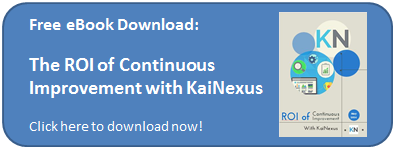-1.jpg?width=250&name=shutterstock_162095042_(2)-1.jpg) George Mallory was an English mountaineer who took part in the first three British expeditions to Mount Everest in the early 1920s. When asked by an interviewer why he wanted to climb Mount Everest, he is reported to have replied, "Because it's there."
George Mallory was an English mountaineer who took part in the first three British expeditions to Mount Everest in the early 1920s. When asked by an interviewer why he wanted to climb Mount Everest, he is reported to have replied, "Because it's there."
This may have been a good enough reason for Mallory to journey up the mountain, but is it compelling enough to sustain your business process improvement efforts? Likely not.
If you are looking to improve processes simply because you have processes, your initiative will quickly lose steam and support. Identifying the goals of process improvement and measuring results against those objectives is a crucial part of achieving a culture of improvement.
Measuring the ROI of continuous improvement efforts is critical for a number of reasons. First, it helps sustain momentum and secure continued executive buy in. Next, it helps identify impactful improvements that might be leveraged in different parts of the organization or applied to different problems. Process improvement benefits can be measured in a variety of ways, including both financial terms and other measures:
- Cost Reduction
- Time Savings
- Revenue Generation
- Product Defect Elimination
- Eliminated Safety Risks
- Customer Satisfaction Metrics
- Faster Go To Market Times
- Increased Production
Cost reduction and revenue generation affect an ROI calculation most directly. Reducing defects can also lead to lower costs (or higher revenue), but these indirect benefits are more difficult to measure in financial terms. Reduced safety risks can help reduce insurance costs, for example, but it's also just the right thing to do. ROI is important, but ROI isn't the only thing that matters.
Each of these is something that can be objectively measured, so that before and after results can be compared and the impact of the improvement can be analyzed over time. If you set a target in one or more of these areas at the outset, decisions will be driven by the expected outcome and you’ll know for sure if you’ve hit the mark.
It is important that a standard method for measuring the ROI and other benefits of improvement is applied across the organization. That way you’ll be able to compare various improvement projects and duplicate the ones with the best ROI.
An added advantage to measuring the results of process improvement is that it makes it easy to recognize and reward employee contributions to your improvement efforts. Being able to state, in concrete terms, how the improvement has helped the organization will increase employee engagement and willingness to invest in the effort.
Setting clear goals for your process improvement efforts and celebrating when your team achieves them will give the initiative the energy to bring about lasting, positive change.



Add a Comment